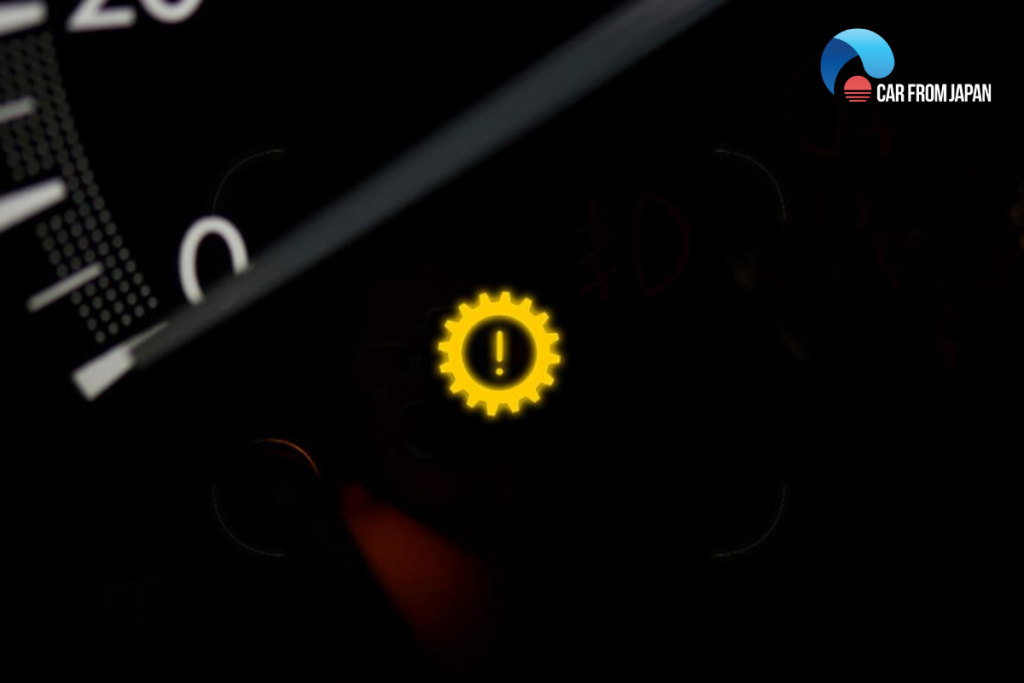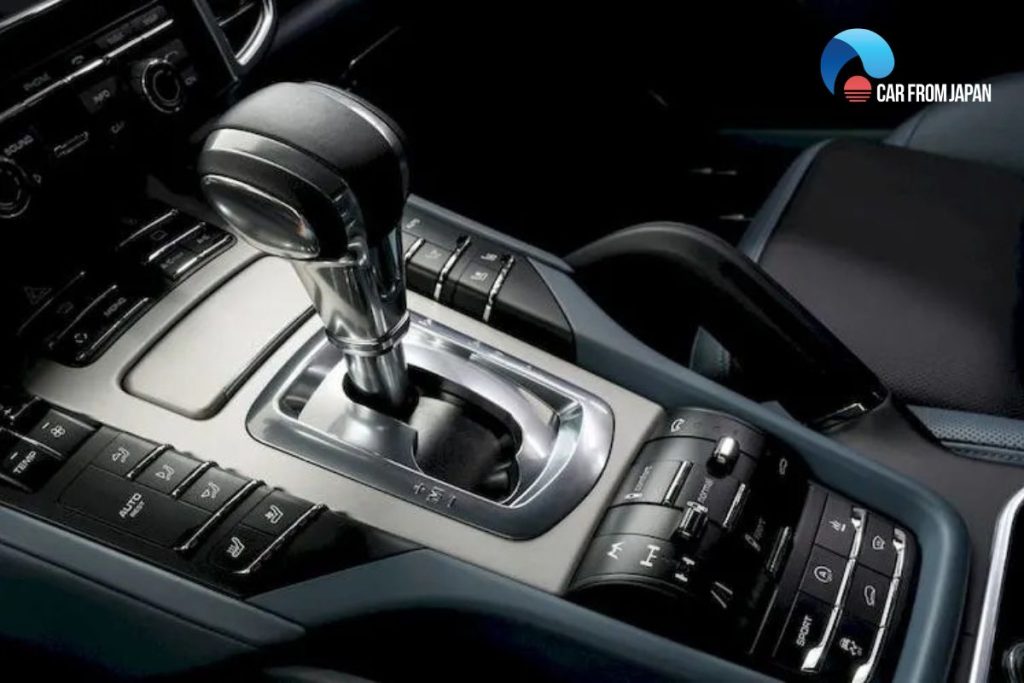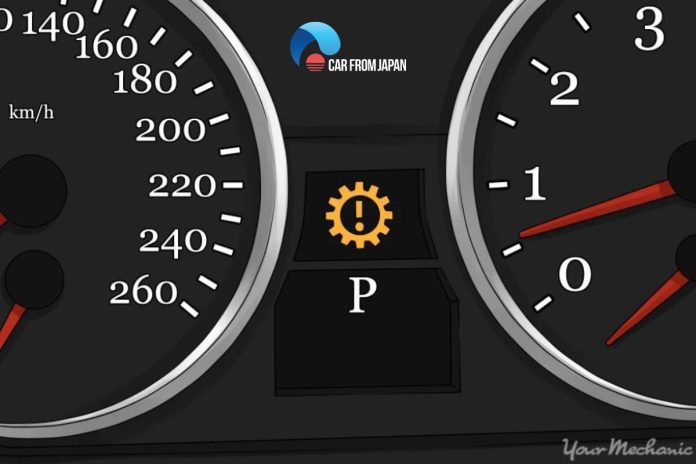The automatic gearbox warning light, also known as the gearbox warning light, denotes a transmission issue that could be brought on by a fluid level, temperature, or pressure issue.
In this article, we will delve deeper into the significance of this warning light and its various manifestations across different vehicle makes and models.
Contents
- Meaning of The Automatic Gearbox Warning Light
- What Does A Transmission Warning Light Look Like?
- Automatic Gearbox Warning Light ON: What Are The Possible Reasons?
- How to Address and Fix the Automatic Gearbox Fault?
- What Happens When Driving With The Automatic Transmission Warning Light ON?
- FAQs on Automatic Gearbox Warning Light
- How can I reset the automatic gearbox warning light after fixing the issue?
- What should I do if the automatic gearbox warning light continues to illuminate even after fixing?
- Can I perform DIY repairs on my automatic transmission system?
- How can I prevent automatic gearbox warning issues in the future?
- What happen with the Mazda BT 50 automatic gearbox warning light?
- Conclusion
Meaning of The Automatic Gearbox Warning Light
The automatic transmission warning light serves as a crucial indicator in your vehicle’s dashboard. Its primary function is to communicate potential issues detected by the vehicle’s computer system, particularly when incorrect sensor readings are identified.
Regularly inspecting and maintaining your sensors is essential because malfunctioning sensors can produce erroneous data, leading to the activation of this warning light.
Among the most common triggers for this indicator to illuminate is an elevated transmission fluid temperature, indicating a deviation from the normal operating range.
What Does A Transmission Warning Light Look Like?
Note that not all vehicles feature a dedicated warning light for transmission issues. The appearance of this light can vary depending on the vehicle’s year, make, and model.
In instances where a transmission problem is detected, certain cars may exhibit different behaviors. Some may flash the overdrive light, while others may present a comprehensive message within the driver information center.

Additionally, some vehicles may display a symbol resembling a thermometer or a gear accompanied by an exclamation point to signify a temperature-related transmission issue.
When a warning light illuminates on your car’s dashboard, consult your owner’s manual for specific information on its meaning and recommended actions. This ensures that you address any potential transmission issues promptly and effectively.
Automatic Gearbox Warning Light ON: What Are The Possible Reasons?
Transmission failure can arise from various factors, triggering the activation of the warning light.
Temperature level
Heat is often cited as the primary cause of transmission failures. Therefore, it’s crucial to ensure that your vehicle’s cooling system is functioning properly and that you maintain an adequate level of transmission fluid.
Promptly investigate any signs of overheating or the illumination of engine temperature warning lights.
Internal transmission failure
Automatic transmissions comprise intricate internal components, including planetary gear sets, turbines, torque converters, and more.
When any of these components malfunctions, the vehicle’s computer system can detect irregular vehicle behavior, leading to the flashing of the transmission warning light.
Shift interlock problems
Note that the transmission warning light may not always indicate a transmission issue. For example, a malfunctioning shift interlock system, designed to prevent gear selection without pressing the brakes, can trigger the warning light.

Issues with the vehicle’s valve body
Most continuously variable transmissions (CVTs) and conventional automatic gearboxes feature a valve body that regulates fluid flow to various gearbox components.
Modern valve bodies often incorporate transmission control modules (TCMs) and electronics. If your transmission malfunctions and the warning light illuminates, the valve body may be the source of the problem.
Problems with torque converters
Many automatic gearbox systems include torque converters, which serve as fluid coupling devices between the transmission and the engine.
These converters can develop issues, such as clutch problems leading to friction and shaking. In severe cases, a damaged converter may disintegrate, potentially contaminating the transmission and causing the transmission warning light to activate.
Computer and electronics control issues
Like most other components in modern vehicles, the transmission is managed by a control module that receives data from various sensors and communicates with other modules through a data network.
If this module, the sensors, or the data network experience faults, the transmission warning light may illuminate.
Additionally, electrical problems like faulty wiring or a malfunctioning shift solenoid can also trigger the warning light.
Getting caught out of gear and unusual noises
If you hear a high-pitched screeching noise from the engine area while driving or shifting gears, it’s often a sign of a transmission issue.
This could be due to fluid shortage or a clogged filter, but it might also indicate impending transmission failure. In such cases, immediate attention is advisable to prevent further damage.

How to Address and Fix the Automatic Gearbox Fault?
Cease driving
Similar to the Check Engine Light, it is crucial to take heed of the transmission warning light.
When this light activates, it is advisable to halt your driving and assess the situation before proceeding further. Even if no noticeable issues are apparent, it is imperative to conduct a comprehensive inspection.
For instance, if the transmission is low on fluid and you continue driving, it may necessitate the replacement of the entire transmission. Conversely, addressing the issue promptly, such as by adding the necessary fluid, can prevent such costly consequences.
Perform diagnostic scanning
You can use a compatible OBD-II code scanner to access the system’s stored alerts. Connect your code scanner to the OBD-II port and retrieve the Diagnostic Trouble Codes (DTCs) to identify the underlying issues.
If there are an excessive number of codes to sift through, consider resetting the warning light and taking the vehicle for a test drive.
After a few minutes of driving, the light should reappear, allowing you to focus on retrieving only the pertinent codes related to the current problem.
Seek professional mechanic assistance
If the obtained codes do not provide sufficient information to rectify the problem, it is advisable to consult a qualified mechanic. When contacting the mechanic, be prepared to describe any unusual observations you have made and share the retrieved trouble codes.
Consulting with a professional mechanic ensures that the transmission warning light issue is addressed accurately and comprehensively.

What Happens When Driving With The Automatic Transmission Warning Light ON?
While driving with the automatic transmission warning light on may not immediately manifest noticeable changes in your vehicle’s performance, it is imperative to address this issue promptly.
Ignoring the warning light can potentially lead to significant damage to the transmission and a considerable reduction in its overall lifespan.
Some vehicles come with a “limp home” mode, which can activate when this warning light is triggered. This mode restricts the vehicle’s top speed, thereby reducing the strain on the transmission.
It’s important to note that the body or chassis, engine, and gearbox are among the three most expensive components of a car.
Choosing to replace these components, especially with new ones, can be costly and may not always yield optimal fuel economy.
To safeguard the health of your vehicle and prevent further damage, it is strongly recommended to have the automatic transmission checked as soon as the warning light appears.
FAQs on Automatic Gearbox Warning Light
How can I reset the automatic gearbox warning light after fixing the issue?
After fixing the underlying issue causing the warning light to come on, some vehicles may require a professional diagnostic tool to reset the warning light.
It’s typically best to have a mechanic or dealership perform this task to ensure it’s done correctly.
What should I do if the automatic gearbox warning light continues to illuminate even after fixing?
If the warning light persists after the issue has been fixed, it may indicate that there is still a problem with the transmission system or an unresolved issue.
In such cases, it’s essential to have your vehicle rechecked by a professional mechanic to diagnose and address the ongoing problem.
Can I perform DIY repairs on my automatic transmission system?
While car owners can do some basic maintenance tasks like checking transmission fluid levels, you can leave more complex transmission repairs to trained professionals.
Automatic transmissions are intricate systems, and improper DIY car repairs can lead to more significant issues.
How can I prevent automatic gearbox warning issues in the future?
Regular maintenance, such as keeping up with scheduled transmission fluid changes, can help prevent transmission problems and warning light issues.
Also, driving your vehicle responsibly and avoiding harsh acceleration or sudden stops can prolong the life of your transmission.
What happen with the Mazda BT 50 automatic gearbox warning light?
If your Mazda BT 50 automatic transmission warning light comes on, it indicates an electrical problem with the transmission.
Driving your Mazda in this condition risks further damage. Take your vehicle to a an authorized Mazda dealer is recommended) as soon as possible.
Check out this video from Dashboard Warning Lights for more information on the check transmission light!
Conclusion
There are various reasons why automatic gearbox warning light may illuminate, including low transmission fluid levels, sensor malfunctions, electrical problems, or more severe transmission issues.
When faced with these warning lights, take immediate action to diagnose and rectify the problem.



